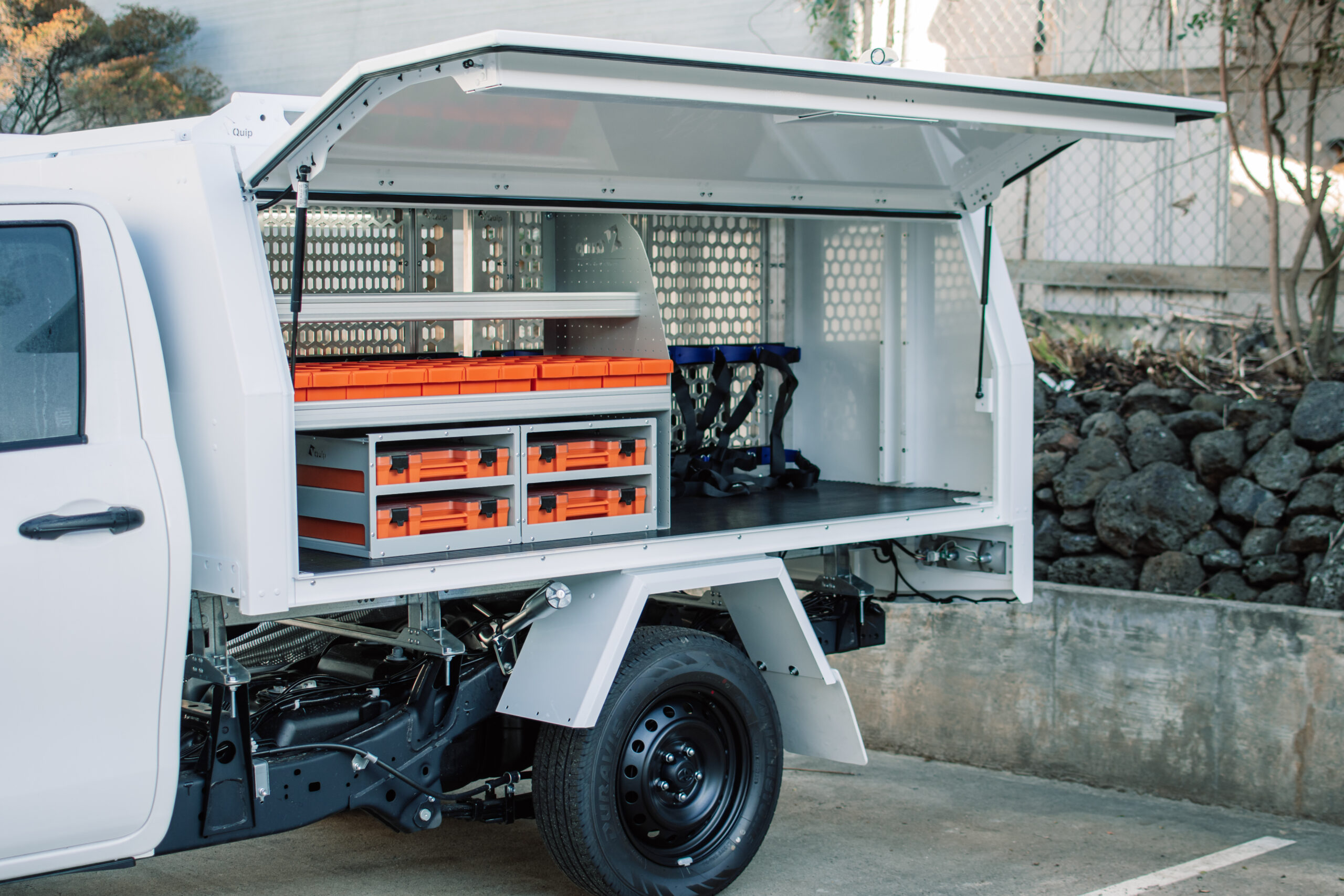
Designing a Van Fitout for Animal Transport
Mar 3, 2025
Designing a van fitout for animal transport requires meticulous planning to ensure the safety, comfort, and hygiene of the animals. Incorporating features such as easy-to-clean surfaces, durable materials, removable trays, and auxiliary air conditioning is very important to consider. This article delves into these key considerations, providing insights and guidance for an effective animal transport van design.
Prioritising Hygiene with Easy-to-Clean Surfaces
Maintaining cleanliness in an animal transport van is paramount. Animals can be prone to accidents, shedding, and other messes, making it crucial to have surfaces that are easy to clean and sanitise. Opting for materials that resist staining and do not absorb odours will contribute to a more hygienic environment.
Durable Flooring: Hardwood Ply Floors
The choice of flooring material significantly impacts the van’s functionality. Hardwood plywood floors are an excellent option due to their durability and resistance to wear and tear. These floors can be easily washed down, ensuring that any spills or messes are promptly cleaned, maintaining a sanitary environment for the animals.
Corrosion-Resistant Cage Construction: Aluminium Cages
Cage construction material is a critical consideration, especially concerning corrosion from pet urine. Aluminium is a preferred material for cage construction as it does not corrode like other metals, ensuring longevity and structural integrity. Moreover, aluminium is lightweight, which can contribute to better fuel efficiency and handling of the vehicle. Companies like VQuip specialise in designing and manufacturing aluminium cages tailored for animal transport, emphasising corrosion resistance and durability.
Removable and Cleanable Trays in Cages
Integrating removable trays within each cage is a practical feature that facilitates easy cleaning. These trays can be swiftly removed, cleaned, and sanitised, ensuring that the cages remain hygienic for each new animal occupant. This design minimises the time and effort required for maintenance between transports and reduces stress on the animals by providing a consistently clean environment. VQuip offers cage systems with removable trays, enhancing hygiene and ease of maintenance.
Ensuring Comfort with Auxiliary Air Conditioning
Temperature regulation is vital for the well-being of animals during transport. Auxiliary air conditioning systems ensure that the van maintains a comfortable temperature, regardless of external weather conditions. This is particularly important in regions like Australia, where temperatures can be extreme. Proper climate control reduces the risk of heat stress and ensures a comfortable journey for the animals.
Additional Design Considerations
- Ventilation: Adequate ventilation is crucial to prevent the buildup of odours and to ensure a constant supply of fresh air. Incorporating muller vents and/or opening windows allows for proper airflow without compromising the safety of the animals.
- Secure Restraints: Ensuring that cages and other equipment are securely fastened prevents movement during transit, which could cause injury to the animals. Utilising strong, reliable restraints and regularly inspecting them for wear and tear is essential.
- Lighting: Proper lighting within the van allows caregivers to monitor the animals during transport and can have a calming effect. Opt for lighting solutions that provide adequate illumination without causing distress.
Conclusion
Designing an animal transport van that prioritises hygiene, durability, and comfort is essential for the well-being of the animals and the efficiency of the transport process. Incorporating easy-to-clean surfaces, durable materials like hardwood ply and aluminium, removable trays, and auxiliary air conditioning ensures a safe and comfortable environment. By considering these key points, transporters can provide high-quality service that meets the needs of the animals and complies with industry standards.
By thoughtfully integrating these design elements, you can ensure that your animal transport operations are both efficient and humane, reflecting a commitment to the highest standards of animal welfare.





